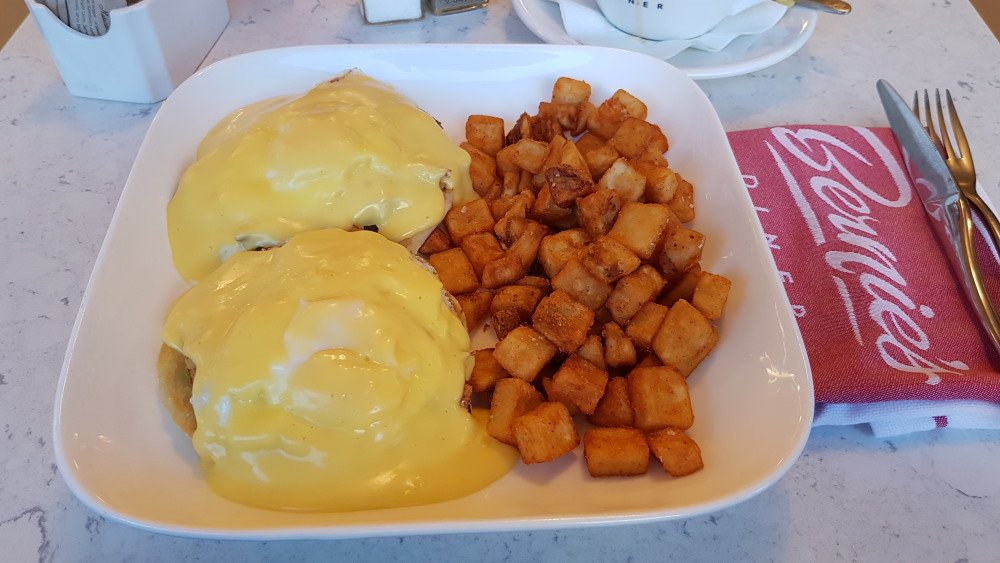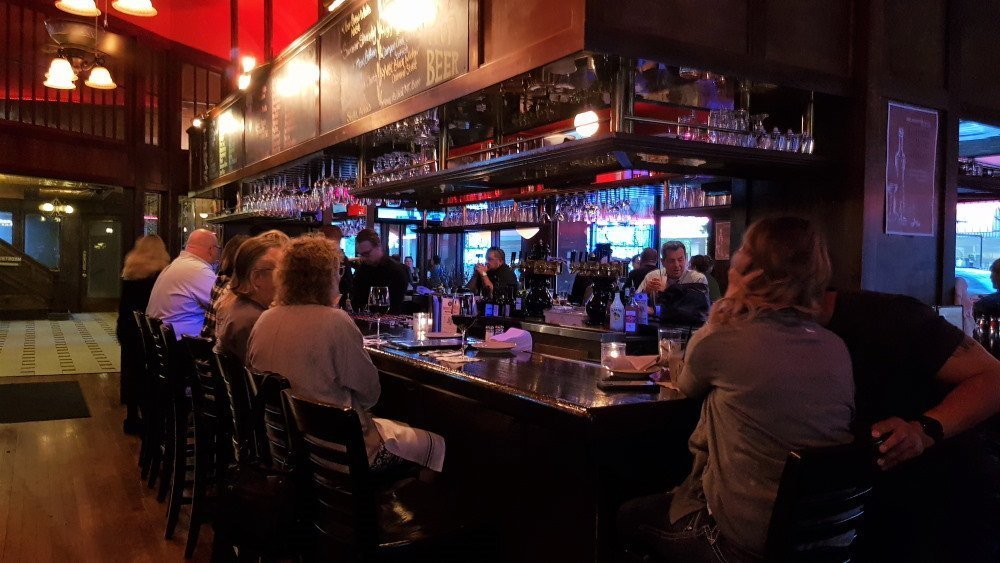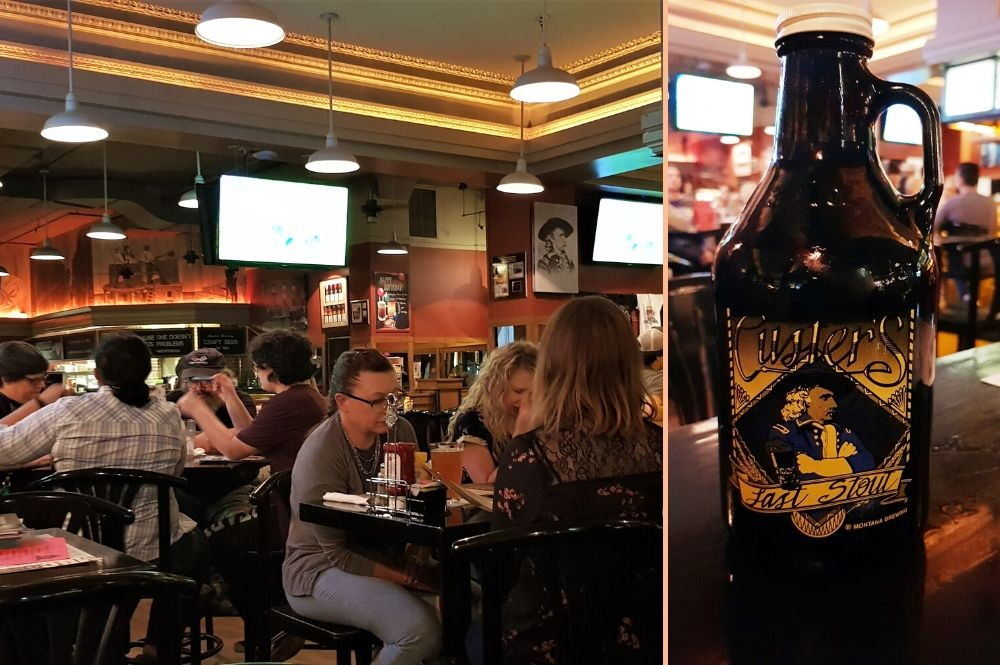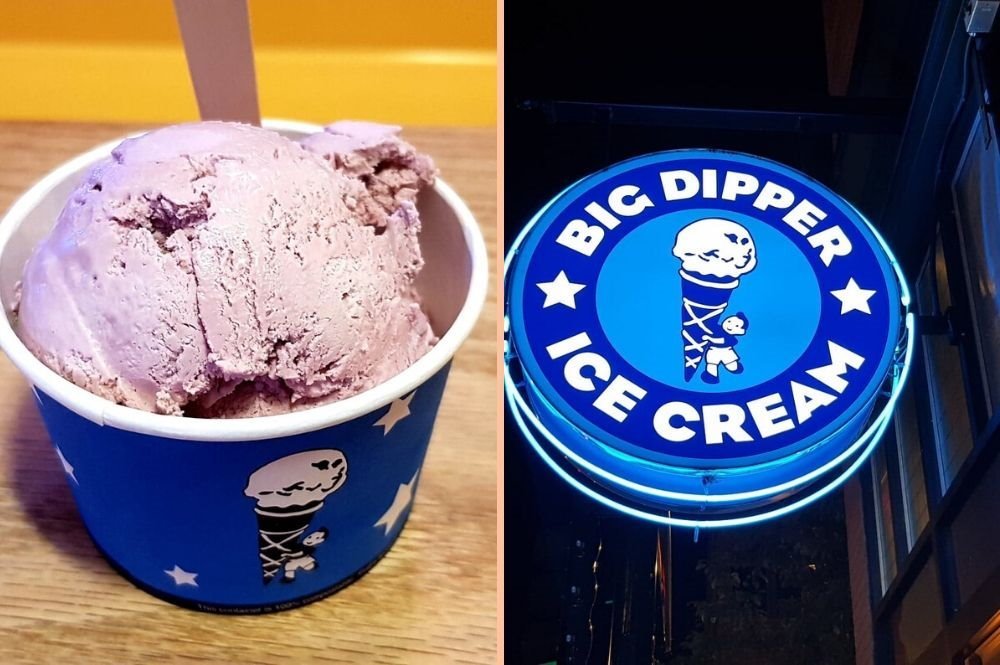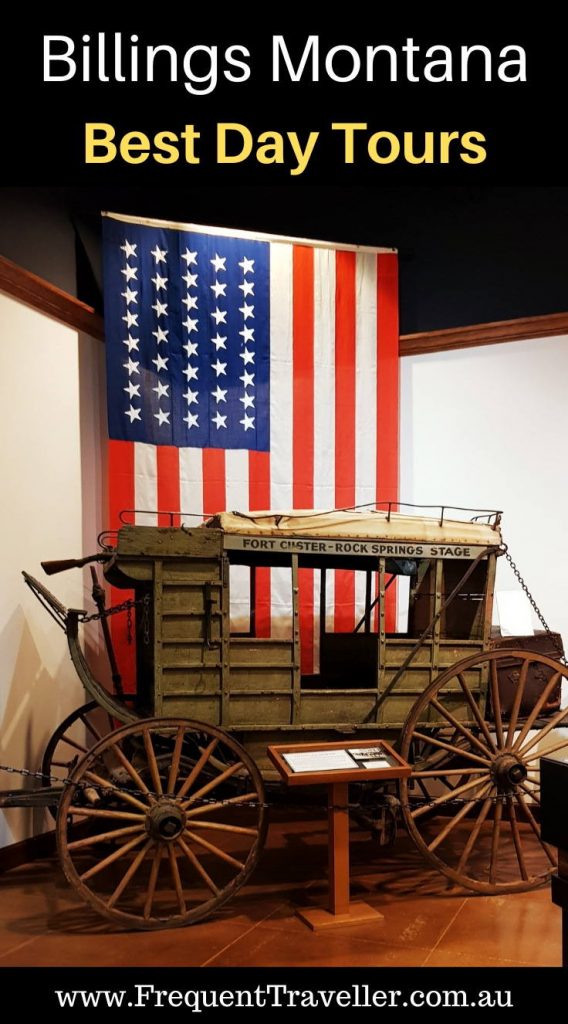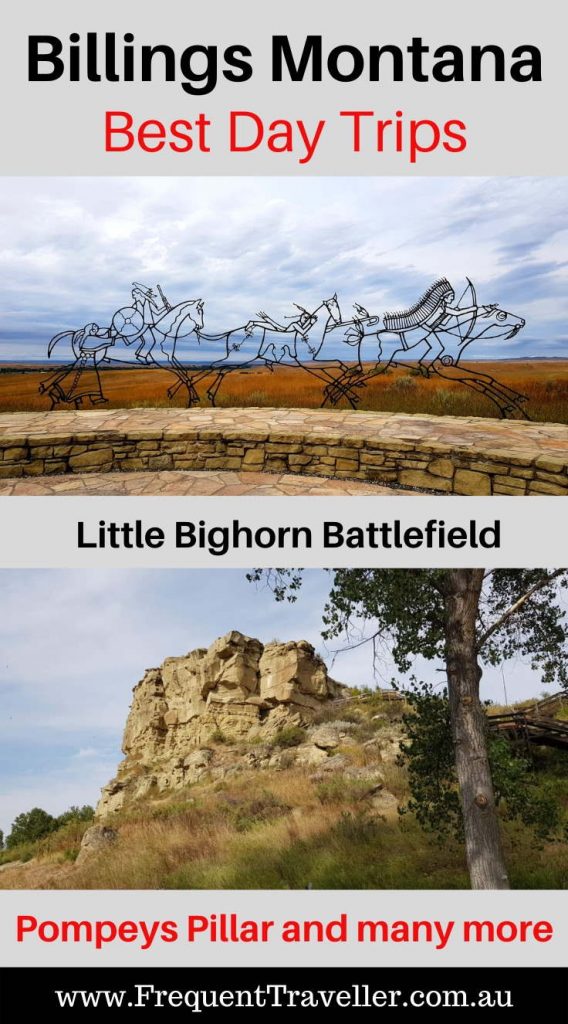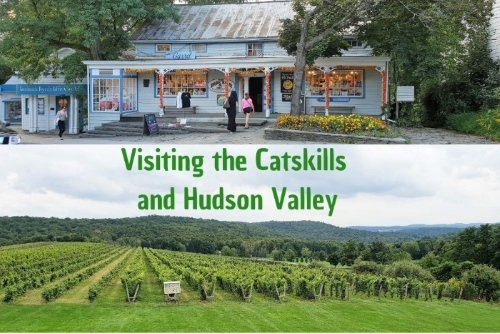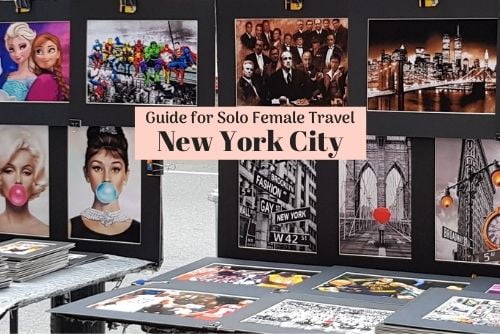Coming from Australia I didn’t know a lot about Montana. I imagined wide open spaces, a home to tough hardworking people who endured harsh winters and were in touch with the earthiness of the endless landscape.
It wasn’t until we attended the TBEX Travel Bloggers Conference in Billings Montana that we discovered the echoes of the wild west, the rich history of Billings and beyond through a selection of Billings day tours.
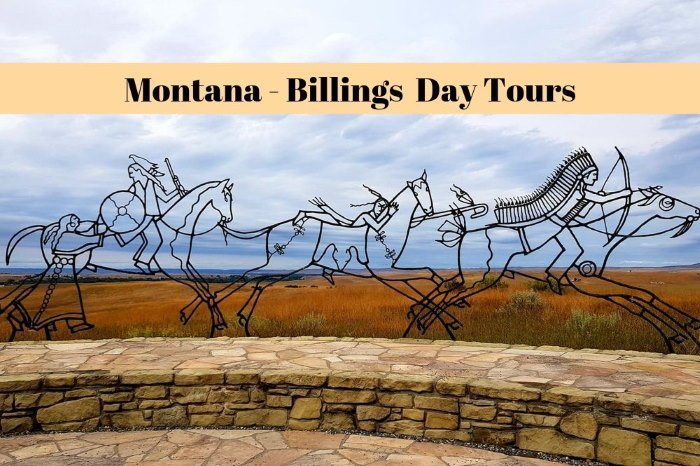
- Where is Billings Montana?
- What to do in Billings
- Little Bighorn Battlefield National Monument
- Custer Battlefield Trading Post
- Pompeys Pillar National Monument
- Big Horn County Historical Museum
- Billings Attractions
- Billings Historic Walking Tours
- Where to stay in Billings Montana
- Where to eat in Billings
- Don't forget about Travel Insurance
- Will you need a Visa?
- Last Words on Billings Day Tours Montana

Where is Billings Montana?
Billings is the largest city in Montana and is located in the south-central region of the state. Billings has a fascinating pioneer and Native American history with links to the Lewis and Clark Expedition and the Battle of Little Bighorn.
What to do in Billings
If you love history and are wondering what to see in Billings, you are in for a real treat! Within a half to one-hour drive from central Billings you will find a selection of attractions that epitomise the spirit of the Old West.
Little Bighorn Battlefield National Monument
The Little Bighorn Battlefield National Monument has been on my bucket list since I was a teenager and I was thrilled to be finally achieving my dream.
The National Monument commemorates a major battle that was fought on the 25th of June 1876 between the Lakota, Cheyenne and Arapaho Indians against the United States Army, a battle commonly known as Custer’s Last Stand.
The Battle of Little Bighorn
During this period the tribes were fighting to preserve their ancestral way of life as nomadic buffalo hunters while the United States Army were under orders to round them up and take them back to the Sioux Reservation in Dakota Territory.
The tribes were led by Sitting Bull who was a respected political and spiritual leader and a champion of the Lakota way of life.
Refusing to be restricted by reservation life a large encampment of approximately 7,000 Lakota, Cheyenne and Arapaho (1,500 to 2,000 of them warriors) were camped along the Little Bighorn River, preferring to continue their nomadic life.
Before the battle Sitting Bull had a dream, he told his people he dreamt of a great victory which would lead to their freedom. There was one condition to this dream coming true, that was that there should be no looting of the dead.
Lt. Col. George Armstrong Custer had a distinguished Army career, winning most of his battles during the Civil War and quickly rising through the ranks.
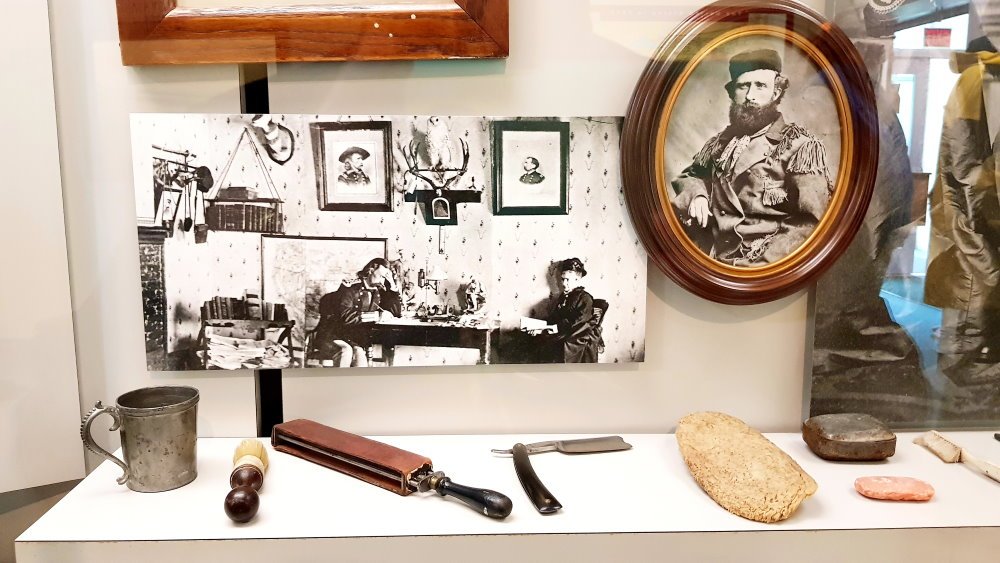
Custer and 262 men of the 7th Cavalry were vastly outnumbered by Indian warriors and lost their lives at the Battle of Little Bighorn. After the battle he and his men were stripped of their belongings and left naked for days before being found and buried in shallow graves.
The tribes were victorious and fought bravely but it was a hollow victory as Sitting Bull and his followers were now on the run and quickly fled north to Canada.
Little Bighorn Battlefield National Monument
The Little Bighorn Battlefield National Monument lies within the Crow Indian Reservation in South East Montana.
There are a couple ways to see the park, you can go on a self-guided tour or take a tour with a Park Ranger. The Little Bighorn Battlefield National Monument covers a lot of territory so make sure you give yourself a day to explore it.
Once at the Little Bighorn Battlefield National Monument you look down over sweeping plains covered with grass, the odd hill offers little refuge in an otherwise open landscape.
Last Stand Hill is quiet, a light breeze rustles through the grass between the white headstones that are scattered across a gently sloping hill.
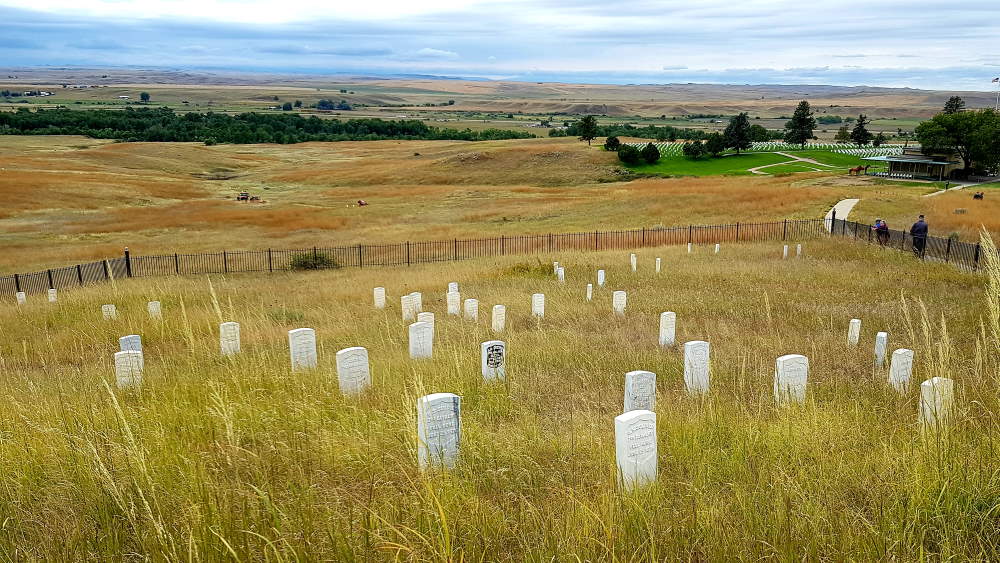
In the centre is the headstone of George Armstrong Custer, which is surrounded by other inscribed headstones, the saddest being the nameless, marked only that a “U.S. Soldier 7th Cavalry Fell Here”.
These headstones aren’t graves but markers of the place where the soldiers fell during the battle. In all there are 249 headstone markers across the battlefield.
Today Custer’s remains lie at the U.S. Military Academy at West Point, the remains of 11 officers and two civilians were buried in eastern cemeteries while the rest of the company are buried in a mass grave at the base of the memorial.
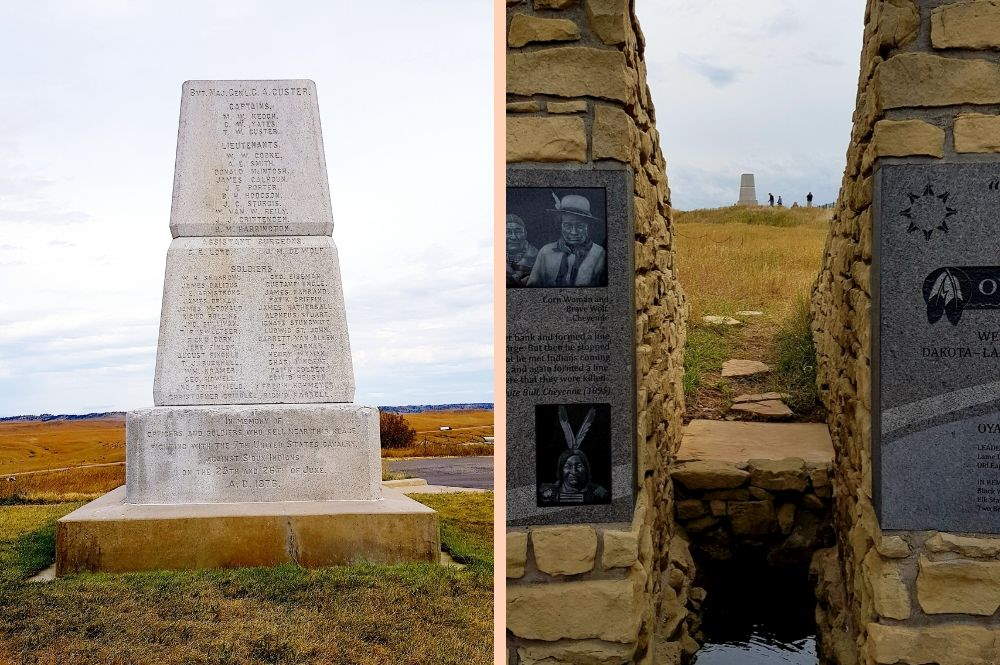
The 7th Cavalry Memorial looks down over the battlefield and is inscribed with the names of the soldiers, scouts and civilians killed in battle.
The Indian Memorial
The Little Bighorn Battlefield National Monument Indian Memorial commemorates the sacrifices of the Apsaalooke, Arikara, Arapaho, Cheyenne and Oyate tribes who fought to protect their traditional way of life during the Battle of Little Bighorn.
Completed in 2013, this striking memorial is highlighted by the Spirit Warrior Sculpture, the Spirit Gate and the engraved granite panels honouring each tribe who participated in the battle.
Spirit Warrior Sculpture
Standing out against the cool skies and warm colours of the Great Plains is the Spirit Warrior Sculpture. The sculpture depicts a Native American woman passing a warrior his shield as three warriors bravely ride off into battle.
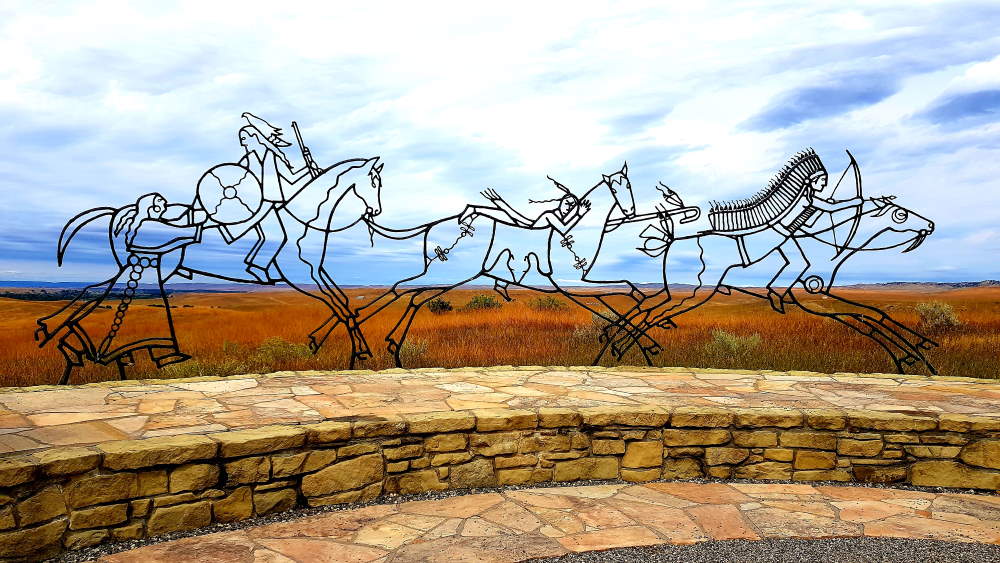
The Spirit Gate
I love the sentiment behind the Spirit Gate. This narrow opening looks up toward the 7th Cavalry Memorial on Last Stand Hill and acts as a pathway for the Cavalry dead to join the memorial’s sacred central circle and continue into the afterlife.
Engraved Granite Panels
Each tribe has been given space to commemorate their warriors and the battle in these beautifully engraved panels. Each tribe tell their story in their own way, a moving memorial to a proud and brave people.
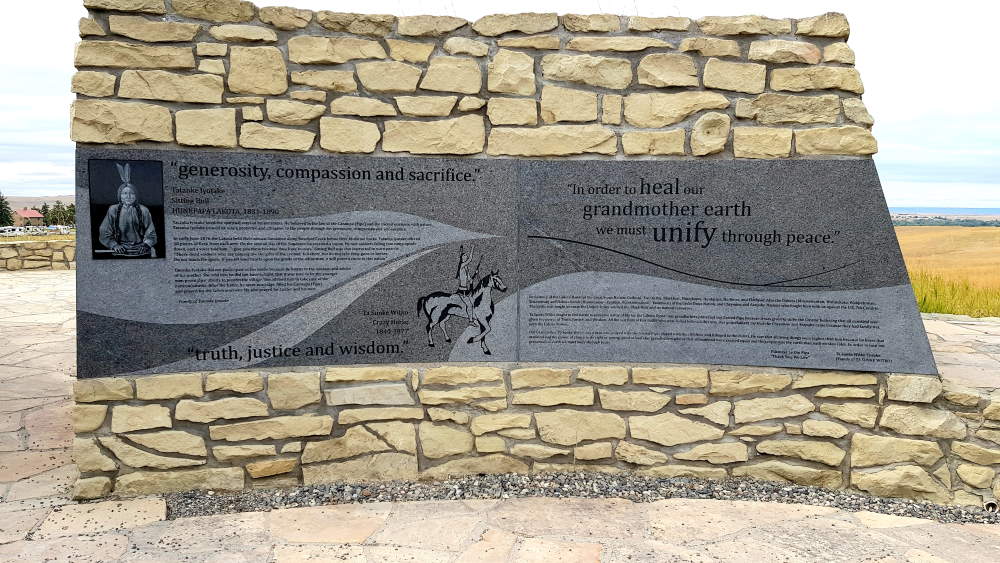
Little Bighorn Warrior Markers
No more than 60 – 100 warriors were killed during the Battle of Little Bighorn. After the battle the dead were quickly collected and buried according to their tribes’ beliefs, either laid out in a tipi or placed under rock hangings.
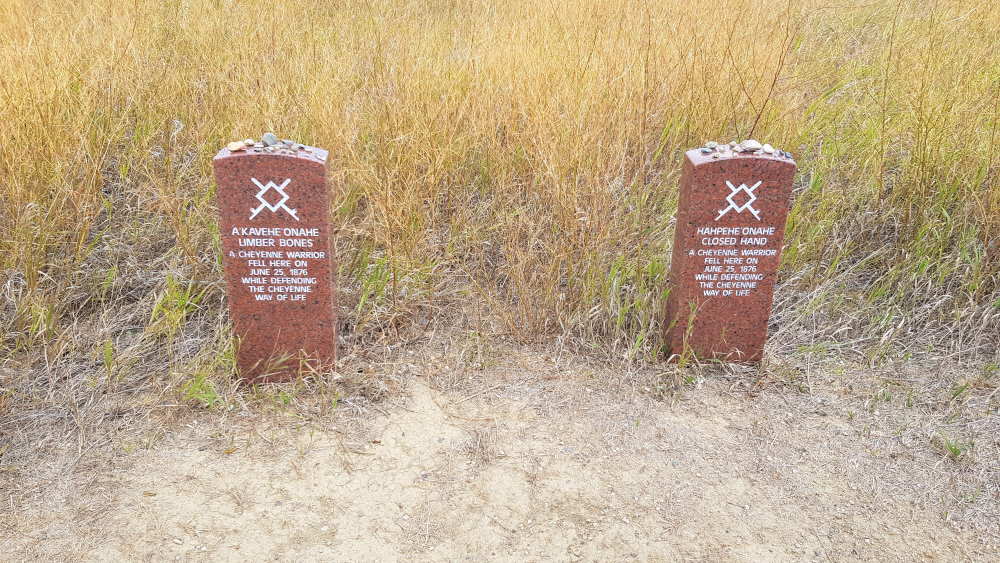
Since 1999 the National Park Service have been erecting red granite markers of known Lakota and Cheyenne casualty sites throughout the battlefield.
Visiting the Little Bighorn Battlefield National Monument is one of my most memorable and moving experiences.
I have only scratched the surface of what to see and do at the Little Bighorn Battlefield National Monument.
There is a museum with exhibits from the battlefield inside the visitor’s centre. You can watch the 20 minute orientation film or if you have time stay for the Park Ranger “Battle Talk” interpretive program.
Custer Battlefield Trading Post
The Custer Battlefield Trading Post is not only a great place to try the local delicacy “fry bread” or buy souvenirs but also the place to see the Indian artefacts that have been lovingly collected by the owners.
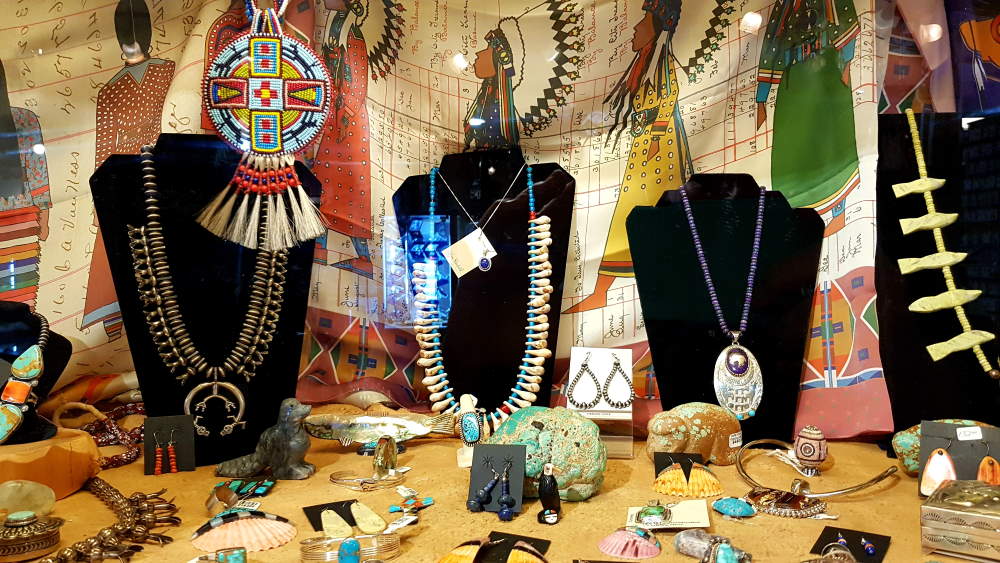
Part of the collection is what is thought to be the only photo of Crazy Horse, one of the famous Chiefs involved in the Battle of Little Bighorn.
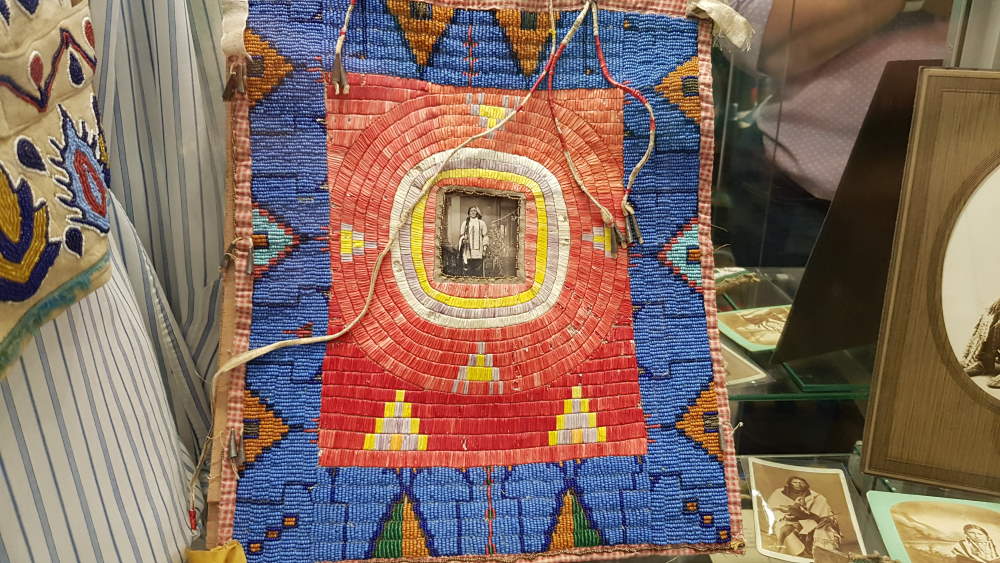
Stop off and make sure to try fry bread, you can either try the traditional style or modern version and they have a choice of toppings from simple honey to Mexican with all the trimmings.
Pompeys Pillar National Monument
Pompeys Pillar sits on the banks of the Yellowstone River and towers 46 metres (150 feet) above the Yellowstone River Valley, an otherwise flat landscape.
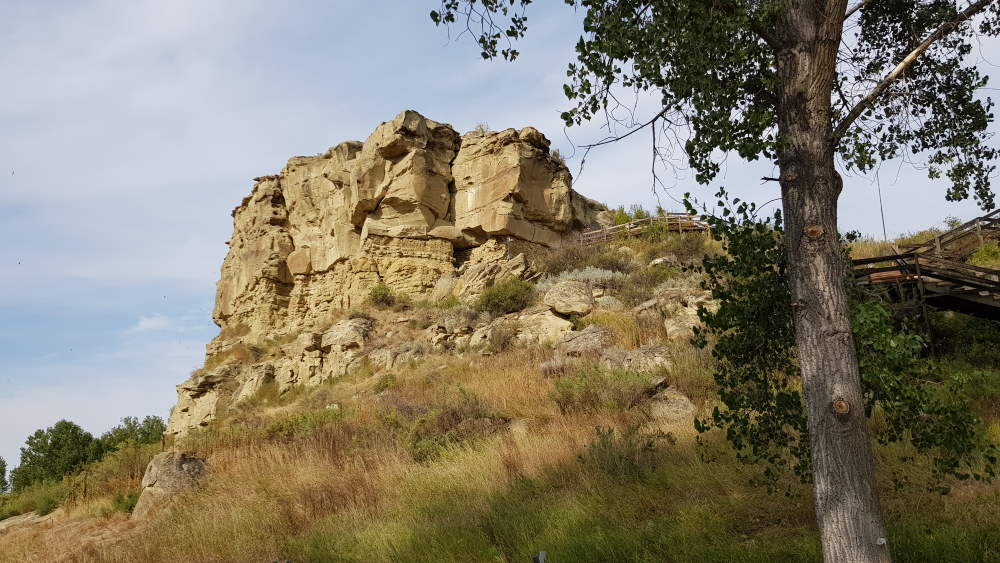
This massive sandstone outcrop has been a place of religious and ritual significance to the early indigenous peoples and hundreds of petroglyphs can be seen decorating the face of the rock. The pillar is called the Mountain Lions Lodge by the Crow people.
A notable visitor was Captain William Clark of the Lewis & Clark Expedition who visited the site on the 25th of July in 1806. Clark climbed the rock and engraved his name and date into the stone, this can still be seen today and is possibly the only physical evidence remaining of the expedition.
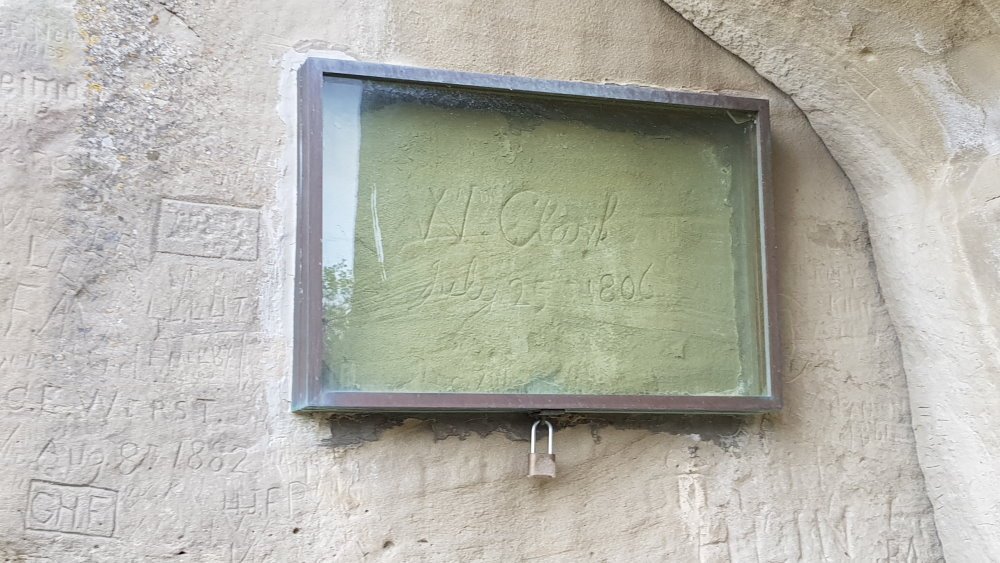
Once you climb the rock you will be met by a volunteer from the Friends of Pompeys Pillar. Our guide John gave us more insight into the Lewis and Clark expedition. Through the journals and maps of Captain William Clark we were able to piece together a timeline of events of his stay in the region. One thing for sure talking to John left me wanting to learn more about the Lewis & Clark Expedition.
John explained how the landscape has changed since the time of Lewis & Clark. The nearby river valley was once the home of vast herds of bison and elk, animals which were once an abundant food source of the native inhabitants.
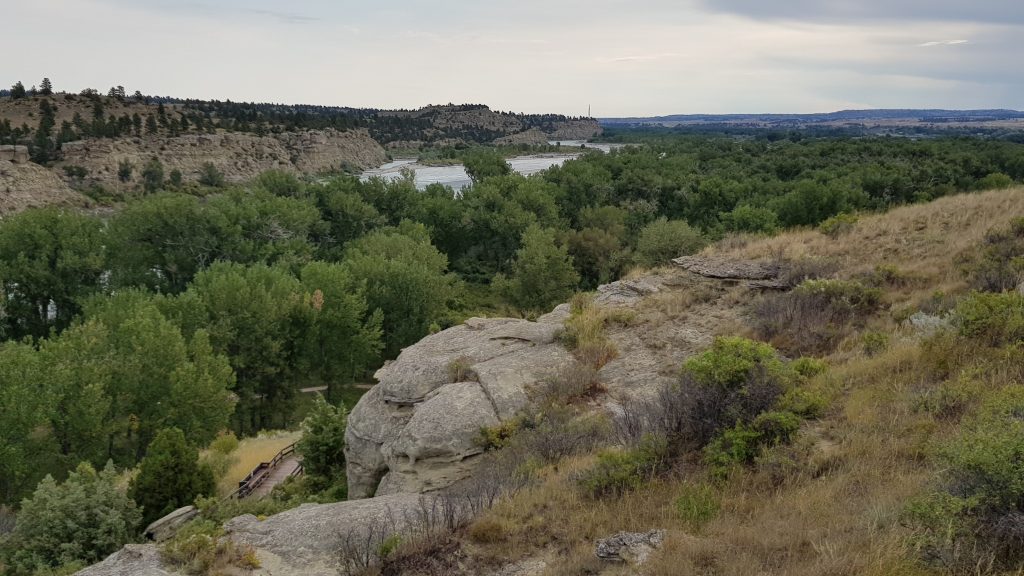
The coming of the railroad upset the migration patterns of the bison, dividing the herds. Railroads took to advertising bison hunts to increase profits and this eventually led to the bison being hunted to near extinction.
I could have stayed longer at Pompeys Pillar, John was an excellent storyteller, passionate about his subject and full of local knowledge, his stories brought the history of the region to life.
Big Horn County Historical Museum
The Big Horn County Historical Museum is one of the most interesting museums I have visited, not only does it feature Plains Indians and pioneer exhibits it also has a collection of 24 historical buildings that are scattered over 35 acres, a time capsule of life in Bighorn County.
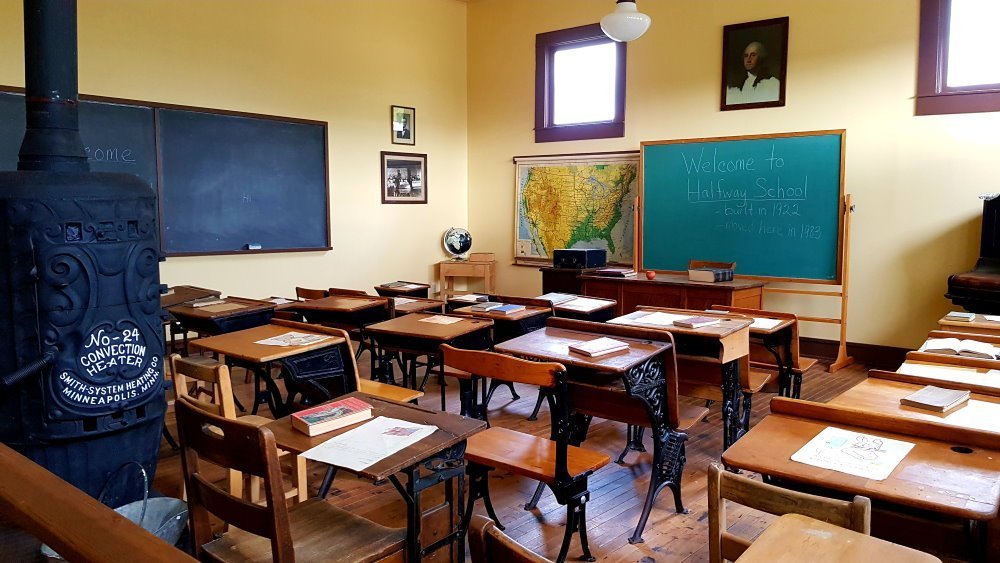
Buildings have been collected over a 40-year period and include log cabins, a 1911 farmhouse, barn, Lutheran Church, schoolhouse, train depot, slaughterhouse and Doctors surgery to name a few.
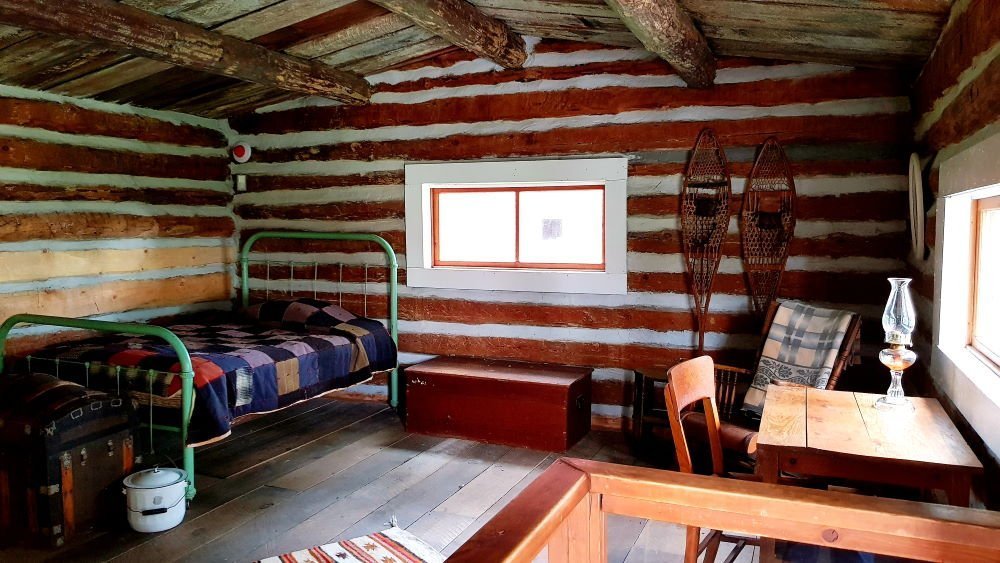
Famous buildings include the studio and cabin of the artist Will James and a Sears and Roebuck catalogue farmhouse from 1911 which has a grizzly history of murder suicide and is rumoured to be haunted.
If you are visiting the Big Horn County Historical Museum make sure to give yourself plenty of time, you could easily spend a day learning the fascinating history of the exhibits.
Billings Attractions
Of course, if you are looking for something closer to Billings you won’t be disappointed. Here are a range of city walking tours and places of interest to see when visiting Billings.
Billings Historic Walking Tours
One of the best ways to discover a new city is to take a walking tour. Billings Historic Walking Tours have a great range of Billings Montana tours with a choice of topics. With tour names such as Bars, Brothels and Bok Choy and Grave Side Stories, it’s time to leave the 21st Century and dive headfirst into the Old West.
So, come and Hoof-it with a Historian by taking one of the Billings Western Heritage Centers’ Historic Walking Tours.
Western Heritage Center
Walking around central Billings you will come across the grand old building that houses the Western Heritage Center. Once the local library it is now the perfect place to store local art and the historical artefacts of this fascinating region.
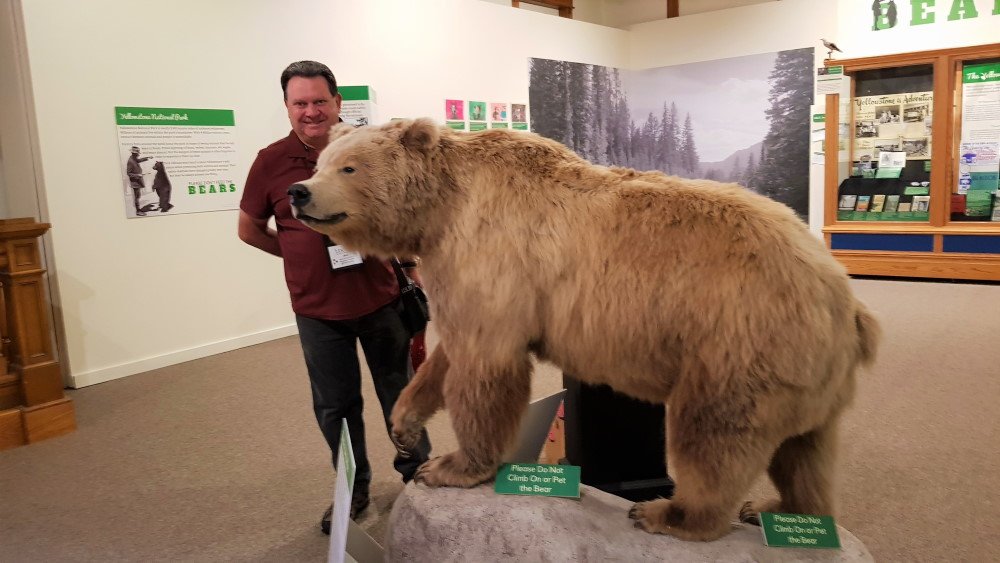
Artworks of old west painter JK Ralston, the thought-provoking prisoner of war depictions of Montanan artist Ben Steele and a collection of 19th century Crow and Gros Ventre Indian ledger drawings are just some of the collections permanently on display.
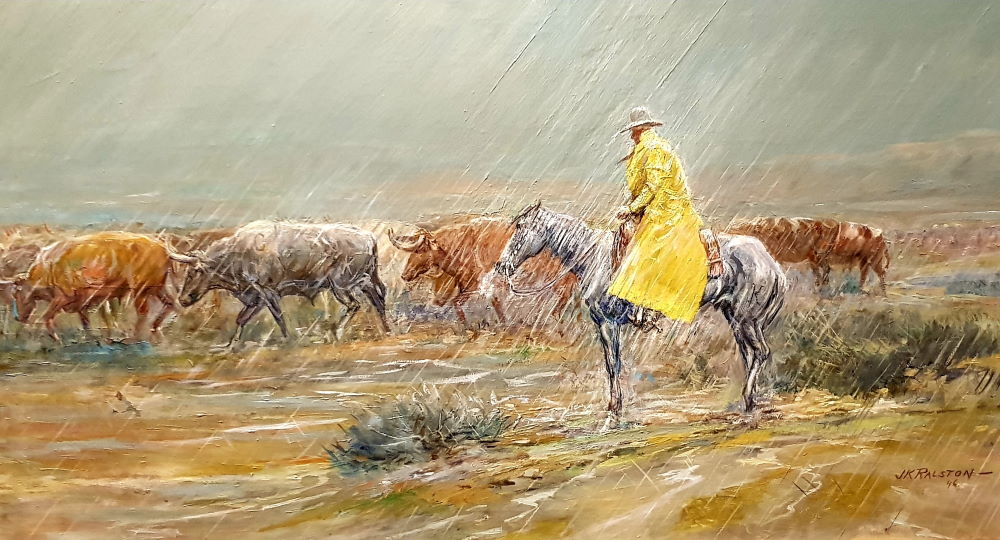
The Western Heritage Center also has a series of travelling and community exhibitions that change throughout the year. The Western Heritage Center is a must to see when you visit Billings Montana.
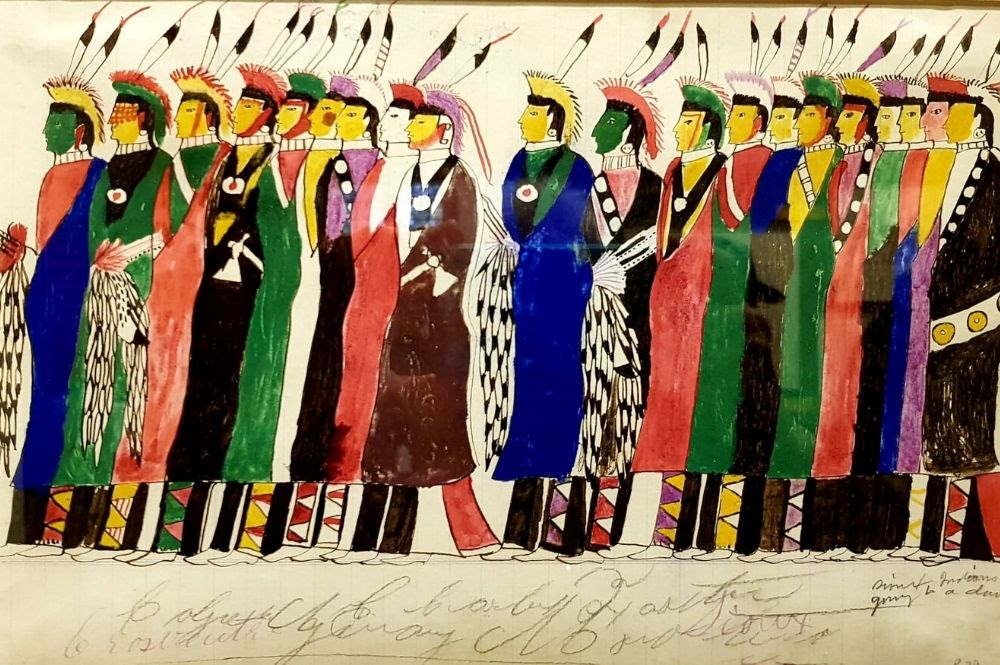
Billings Day Tours – Old Town Walk (Bars, Brothels & Bok Choy)
The city of Billings was founded on the back of the railroad. The early days of Billings were full of opportunity for those with an entrepreneurial spirit. Like many frontier towns sometimes this spirit swayed a little on the lawless side.
Hearing the stories of old Billings will make you smile as a cast of characters come to life. Billings has played host to many famous and infamous people including Calamity Jane and you can learn about them during this entertaining walking tour.
Calamity Jane
Calamity Jane spent a lot of time in Billings living in a log cabin on Canyon Creek between 1893 to 1902. In later life Calamity Jane went on to be a storyteller in the Buffalo Bill’s Wild West Show.
During the walk you will see where Calamity Jane once lived and hear about her wild reputation, one that landed her in jail on many occasions. For all her disorderly behaviour Calamity Jane is well remembered for her generous nature and charitable ways.
Yellowstone Kelly Interpretive Site
Yellowstone Kelly
The life of Yellowstone Kelly reads like an old west adventure novel. To learn more about this extraordinary man head to the Yellowstone Kelly Interpretive Site on the bluffs overlooking Billings at Swords Rimrock Park.
Luther Sage “Yellowstone” Kelly was born in 1849, and as a teenager yearned for the Wild West, setting off to become one of the most notable frontiersmen and warriors of his time.
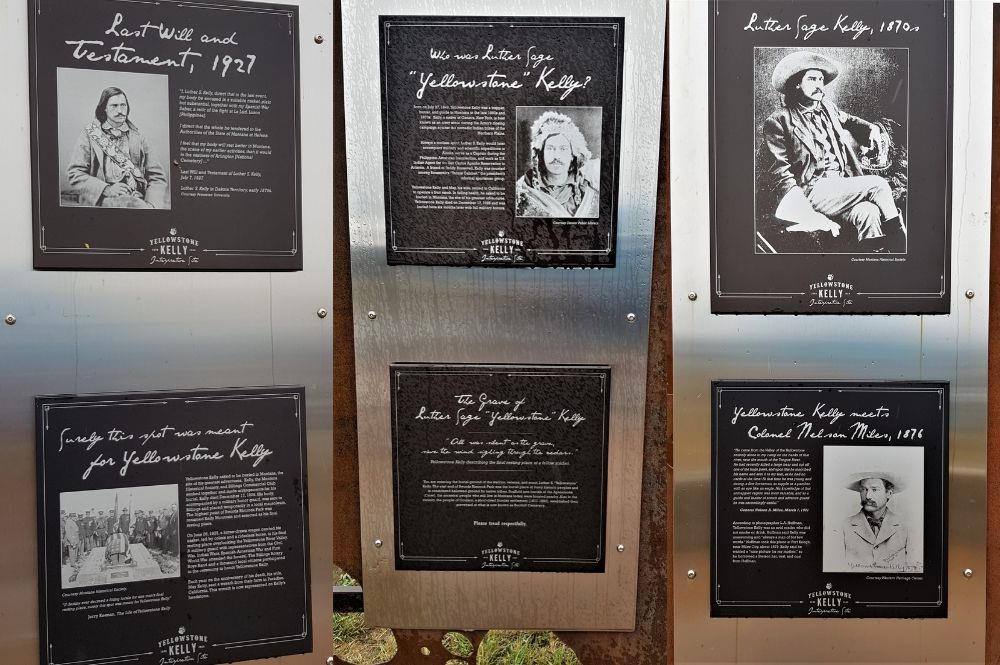
Yellowstone Kelly was a skilled scout, guide and hunter who often ventured into the wilderness alone surviving by chopping wood, trapping wolves and hunting bison. He spent time exploring the Yellowstone Valley and Missouri River and befriended the local peoples as he travelled.
An accomplished soldier, Yellowstone Kelly fought in many battles, most notably as a Union Soldier in the American Civil War and Philippine American War.
Yellowstone Kelly was a handsome devil, a dashing figure and the personification of the spirit of the Old West.
Yellowstone County Museum
The Yellowstone County Museum is located across from Billings Logan International Airport. The museum is housed in an authentic log cabin and although small has a great display of western artefacts.
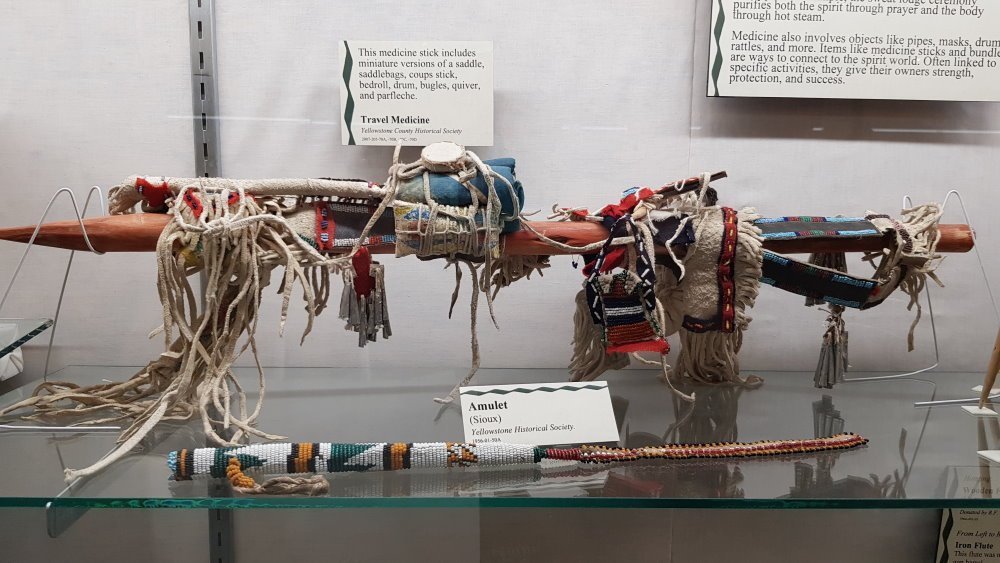
I was really impressed with the large collection of Native American artefacts, a magnificent array of war bonnets, traditional dress and Indian beading. Our guide Zach explained what the artefacts were used for and this gave us a better understanding of the tribal way of life.
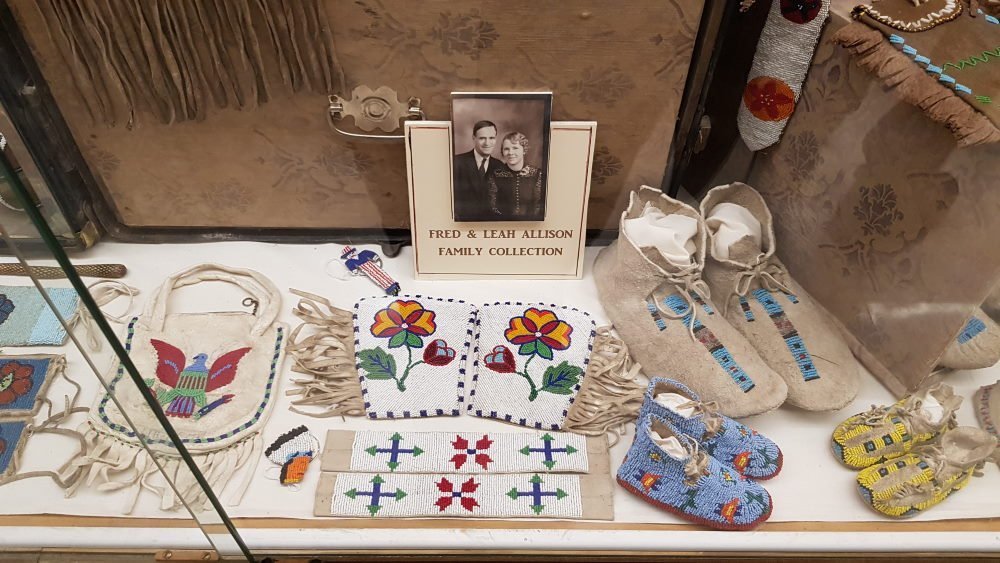
The Historic Moss Mansion Neighbourhood
Arriving in Billings in 1892, Preston Boyd Moss became a leading figure as a banker and entrepreneur in the Billings community.
Preston Boyd Moss and his wife Mattie built Moss Mansion in 1903 for a growing family of six children. The mansion stands out as an example the architecture and decor of the time, a window into the lives of one of Billings most prominent families.
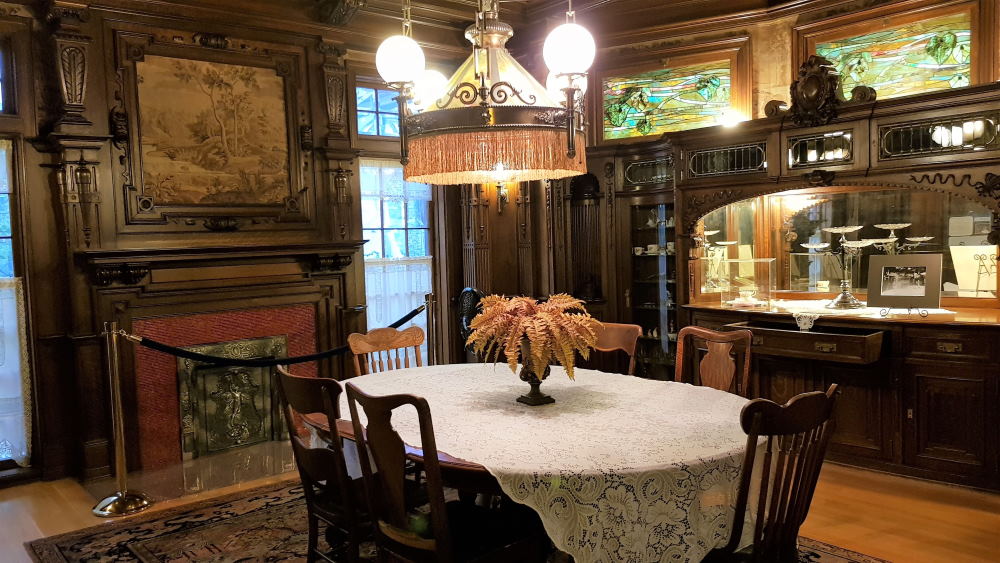
The Moss Mansion has made a star appearance in films and miniseries including “Return to Lonesome Dove” and “Son of the Morning Star”.
Moss Mansion is rumoured to be haunted and you can get in touch with your spooky side by taking a Moss Mansion Ghost Tour.
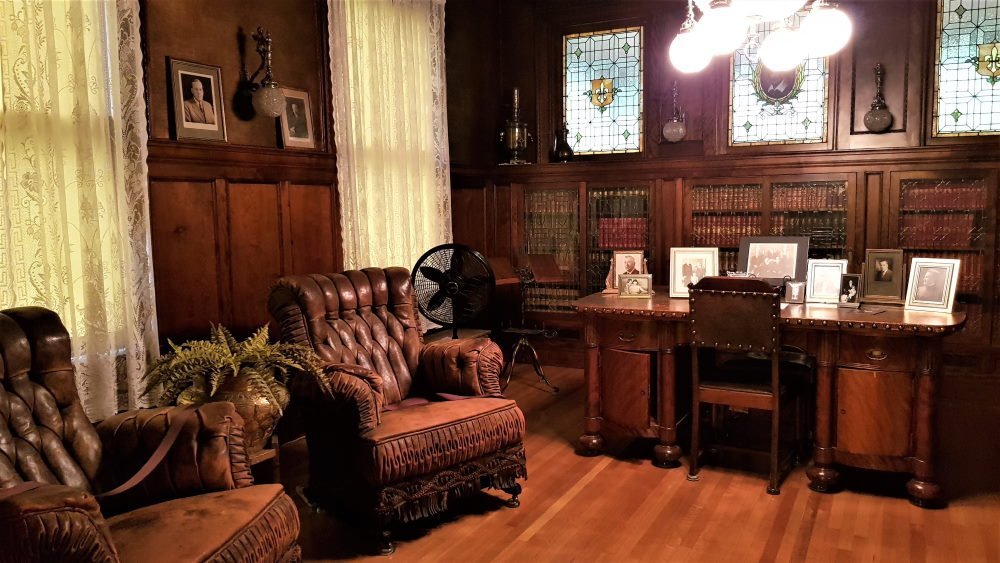
If ghosts aren’t your thing, you can choose from the variety of Moss Mansion tours. When visiting Billings, make sure to put Moss Mansion on your list of places to see.
Where to stay in Billings Montana
The Northern Hotel Billings

The historic Northern Hotel has been lovingly restored and transformed into a luxurious contemporary hotel with a welcoming heart.
Walking into the hotel you will be greeted by a warm fire in a modern sitting area with subtle Montanan accents. The hotel is the epitome of style and comfort, a cosy retreat after a busy day.

